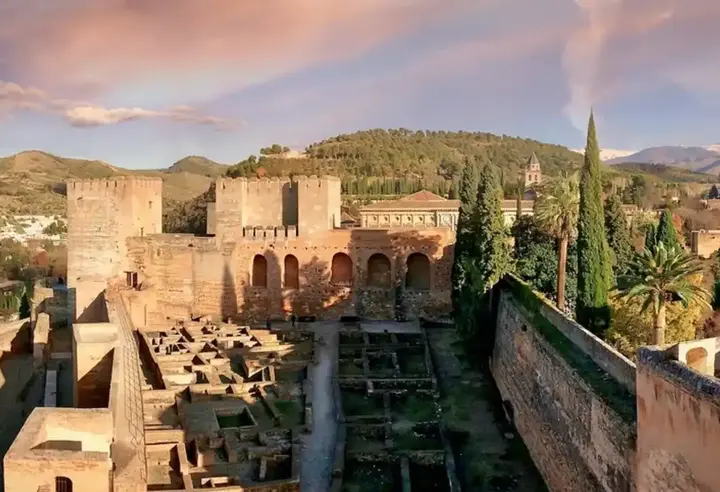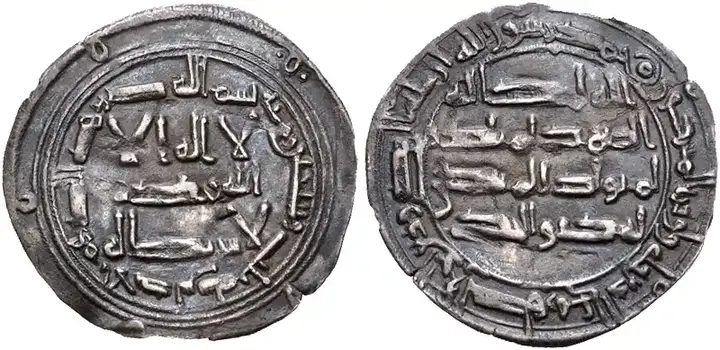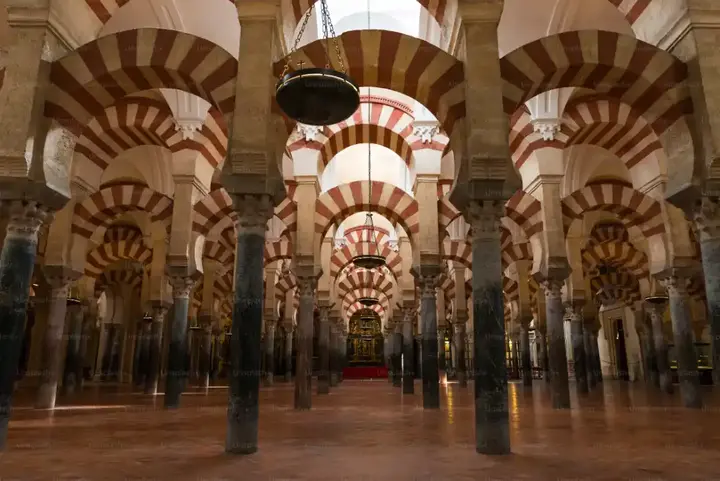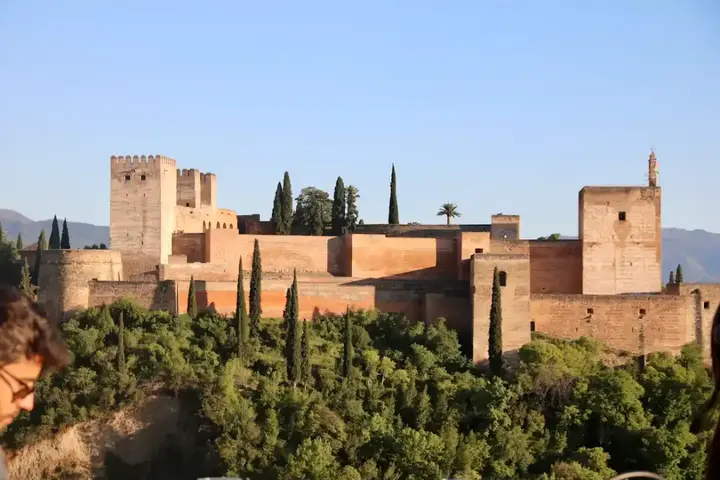The Arab-Islamic conquest of Andalusia: history - civilization and heritage

The Arab-Islamic conquest of Andalusia, which began in the early eighth century, represents one of the most important chapters in the history of Islamic expansion and European civilization. It left an indelible imprint on the region's cultural, intellectual and architectural landscape and led to the creation of a dynamic and sophisticated Islamic civilization in the Iberian Peninsula, characterized by cultural exchange, intellectual prosperity and religious tolerance. This article discusses the historical events and impact of the Arab-Islamic conquest of Andalusia, and highlights its contributions to the region and the world.
Show key points
- The Arab-Islamic conquest of Andalusia began in 711 AD under the leadership of Tariq ibn Ziyad and swiftly expanded to encompass most of the Iberian Peninsula.
- Abd al-Rahman I established an independent Umayyad dynasty in Andalusia, fostering political stability and contributing to major architectural developments like the Mosque of Córdoba.
- Islamic rule in Andalusia ushered in a golden age of intellectual and cultural exchange, with scholars such as Ibn Rushd and Ibn Khaldun making lasting contributions to global knowledge.
- ADVERTISEMENT
- Religious tolerance under Islamic rule allowed Muslims, Christians, and Jews to coexist peacefully, promoting a diverse and cooperative society.
- The architectural legacy of Andalusian Islam includes iconic structures like the Alhambra and the Grand Mosque of Córdoba, reflecting a fusion of various artistic traditions.
- Despite the fall of Granada in 1492, Andalusia’s cultural and intellectual heritage continued to influence both the Islamic world and European civilization.
- The migration of Andalusian scholars following the decline of Islamic rule helped disseminate its rich intellectual traditions throughout the broader Muslim world.
Open Date:

The conquest of Andalusia began in 711 AD, when an army of 7,000 fighters, led by the governor of Tangier, Tariq ibn Ziyad, crossed the Strait of Gibraltar and defeated the Visigothic forces led by King Roderick at the Battle of Guadalletti. Tariq's forces were then reinforced by those of Wali Musa ibn Nusair, who planned a second invasion, and within a few years both controlled more than two-thirds of the Iberian Peninsula. The second invasion included 18,000 mostly Arab soldiers, who quickly captured Seville and then defeated Roderick's supporters in Mérida and met Tariq's forces at Talavera. The following year, the combined forces continued their advance towards Galicia and the northeast, capturing León, Astorga and Zaragoza. This decisive victory led to the rapid expansion of Islamic rule across the Iberian Peninsula, culminating in the establishment of a sophisticated and cosmopolitan civilization in Andalusia.
Recommend
In 756, Abd al-Rahman I (the interior), a survivor of the recently overthrown Umayyad dynasty in the Levant, arrived in Andalusia and seized power in Cordoba and Seville, declaring himself emir. He considered it the legitimate continuation of the Umayyad Caliphate. Abd al-Rahman's rule was stable in the years following his conquest, building major edifices, the most famous of which was the Mosque of Cordoba, and helped civilize the emirate and continued to defend it against invaders, including suppressing numerous rebellions.
Abd al-Rahman I founded an independent dynasty that lasted until the eleventh century. It was succeeded by a variety of short and small principalities, called sect principalities unable to halt the expanding advance of the northern Christian kingdoms. The last Islamic principality, Granada, fell to the armies of Castile in 1492.
Impact and legacy:

The influence of Andalusian Islam has been very great over the centuries, and can be summarized in some points:
Cultural Renaissance and Intellectual Exchange: The Arab-Islamic conquest of Andalusia led to a cultural renaissance characterized by a thriving exchange of ideas, knowledge and artistic expression. Scientists and philosophers from diverse backgrounds gathered in Andalusia and contributed to building a golden age of learning and innovation that Andalusia became its beacon, with scholars such as Ibn Rushd, Ibn Sina and Ibn Khaldun making pioneering contributions to philosophy, medicine, mathematics, history and astronomy. The translation movement facilitated the dissemination of classical knowledge from Greek, Latin and Sanskrit sources, enriching the intellectual landscape of Islamic civilization. This translation movement played a pivotal role in preserving the intellectual heritage of antiquity and transmitting it to the Islamic world and beyond.
Religious tolerance and interfaith harmony: Islamic rule in Andalusia was marked by a remarkable degree of religious tolerance and coexistence. Muslims, Christians and Jews have lived side by side, creating a rich tapestry of cultural diversity and mutual respect. The concept of dhimma guarantees the protection of religious minorities, allowing Christians and Jews to practice their religion freely and participate fully in the social, economic and intellectual life of Andalusian society. This atmosphere of tolerance fostered the spirit of cooperation and dialogue, and embodied the principles of Islamic and humanitarian pluralism.
Cultural synthesis and the Golden Age: In addition to religious tolerance, the Arab-Islamic conquest of Andalusia led to a golden age of cultural synthesis and intellectual prosperity; Arab, Amazigh (Berber), Jewish and Christian societies coexisted harmoniously, contributing to a lively exchange of ideas, languages and artistic traditions.

Architectural wonders and urban development: The Arab-Islamic conquest of Andalusia ushered in an era of architectural innovation and unprecedented urban development. The Arab Muslim rulers of Andalusia were known for their patronage of architecture and urban planning, which led to the construction of prominent landmarks that still captivate visitors to this day. Magnificent mosques, palaces and fortifications adorn the Andalusian scene, reflecting a blend of Islamic, Byzantine and Western Gothic influences. Landmarks such as the Grand Mosque of Córdoba, with its charming arches, geometric patterns and intricate mosaics, and the Alhambra in Granada, with its magnificent stucco work, lush gardens and poetic engravings, stand as permanent testaments to the architectural genius of Andalusian civilization.
The end:

The Arab-Islamic conquest of Andalusia is a testament to the transformative power of cultural exchange, intellectual research and religious tolerance. Despite the eventual decline of Islamic rule in the late Middle Ages, the heritage of Andalusian civilization continues to inspire and admire scholars, artists and historians around the world. The conquest of Andalusia serves as a compelling reminder of the potential for unity, diversity and coexistence in human societies, and offers valuable insights to build a more inclusive and enlightened world. On the other hand, Andalusian cultural and intellectual heritage should not only be sought in what is now known as the West. Andalusian Islam produced works, doctrines and practices that had a lasting impact on the Muslim world as a whole. After the Western expansion of Islamic lands, Andalusian intellectual elites began the process of migrating to other areas of Islam. This helped spread Andalusian cultural achievements among Muslims. A look at the contents of existing Islamic libraries reveals that the list of Andalusian "bestsellers" in Islamic religious literature is long, and that in certain regions, such as North and Central Africa, Islam cannot be understood without reference to the thought and work of the scholars of Andalusia.








